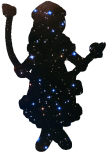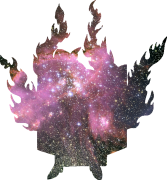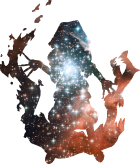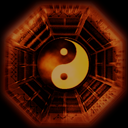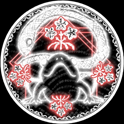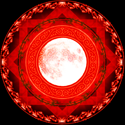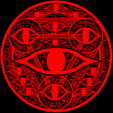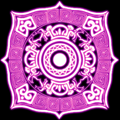Return from the Land of Gods
I have returned from Japan. Well, it’s been about three weeks since I came back. There’s a lot to unpack about going there. However, there’s a lot to unpack also about the process of coming back. So this will not be just about Japan and experiences there. I’ll focus on the two most impactful events of the latter half of my stay which are visits to Koyasan and Ise Jingu.
I feel like lately the contents of the Archive have been a bit too self-indulgent and centered on my experiences and thoughts. The reason for that is that the process of going to Japan, learning the language, dealing with travel anxiety and making the preparations severely ate into time I could dedicate to research and writing for the Archive. I also wanted to provide something practical via the Practice Mode section before I left. I had a not entirely unreasonable fear that I might not come back, so the urge to leave a concrete legacy before I leave was very urgent.
I did however return, alive and arguably well, having gone through something very cathartic that didn’t happen just in Japan. I have a much clearer vision for the Archive going forwards now. Main things to look forwards are a series of articles detailing the history and origins of the six kami of Gensokyo who are my main objects of reverence, and a proper travelogue based on the places I visited. Something to to look forwards to is also perhaps the kind of invisible community surrounding this site becoming more visible.
A broader rework of the site will come at some point, as there are some new ideas I have been exposed to which I think give a better idea of what is going. For example, Kasulis’ holotrophic reality, Faure’s idea of gods as networks and Eliade’s eternal return are among such ideas. In turn, there are some ideas I don’t find so useful as explanations anymore, mainly the egregore theory.
I’ve also made contact with someone who took part in a very old precursor to the 2024-2025 wave of esoteric threads on /jp/, and these threads apparently predate the oldest Western mention of the spiritual side of Touhou I have found so far. The Japanese half of that article is of course waiting to be done, and I feel like I have a much better idea of how they perceive things now.
I have my work cut out for myself. But before all of that, let’s take a look at my experiences in Koyasan, Ise, how and why it was difficult to come back, what is the value of orthopraxy vs just doing things and what can be learned from this all.
Koyasan, Heart of Shingon
I visited Koyasan, the spiritual center of Shingon Buddhism, and stayed at temple overnight there. The stay included an ajikan meditation session and taking part in a Buddhist memorial service and a goma fire ritual. I also took part in a guided tour of the Okunoin cemetery.
Koyasan is a beautiful place, and it feels like it’s quite out of the way. The town of Koya is very small, and it takes 2-3 hours by train and ropeway from Osaka to get there. The shaky mountain railroads gave me plenty of time to practice the affirmation ”I trust my life in the hands of others”. It’s an impressive feat that a railroad exists in such difficult conditions to begin with.
As it is a world heritage site, Koyasan had a decent amount of tourists there despite it not being some kind of peak season. The place had a serene and reverent atmosphere to it. This is the place where I was most firmly corrected for a social mishap – not knowing where to properly put my shoes in a place where I had to take them off. I think the locals take Koyasan and it’s heritage very seriously.
The tour at Okunoin included explanations about not only the place itself, but also about Shingon Buddhism. While I had read about Shingon before coming there, I found what and how the people there chose to present to visitors quite interesting. Buddhism is not an easy topic, particularly when it’s a branch of it like Shingon that doesn’t quite slot so nicely into secularized default Western views. The explanation of Shingon given was basically that all of existence is an interconnected conscious, enlightened whole that Shingon calls the Dainichi Nyorai, or the Cosmic Sun Buddha. Therefore, all of existence can be an enlightened teacher. Learning the lessons however requires constant practice, especially of meditation. The ideal is to be like a lotus, able to stand tall and beatiful even among ugly circumstances.
One might think that a cemetery at night could be a bit creepy, but Okunoin really wasn’t, not even after the group dispersed after the tour and I returned to the temple lodgings mostly by myself. I think how serene it was is proof of the love and care they show for the deceased there. Many famous people are buried there, including corporate leaders, nobles and samurai warlords of old times. The most famous resident of the cemetery is jowever said to be not dead but in eternal meditation. This person in question is none other than Kobo Daishi Kukai, founder of Shingon. We got to visit the outskirts Kobo Daishi’s mausoleum, which was undergoing renewal. There, our guide chanted out the Heart Sutra. It was a wonderful, magical moment.
Dainichi Nyorai (Mahavairocana) is the main object of interest or reverence in Shingon, and the practice the monks are engaged in aims at becoming one with Dainichi Nyorai, hence all of the universe. Or multiverse – descriptions of Dainichi Nyorai are rather grand, with describing how ”in his body are all sorts of lands of sentient beings. Even in a single pore are countless, immeasurable vast oceans”. While there exists a human-like presentation of Dainichi Nyorai, it is understood to be only a representation. The universe isn’t a golden man. Common non-humanoid depictions of Dainichi Nyorai include the disc of full moon and the seed syllable A, or a combination of these.
The seed syllable A within the moon disc is an object of focus in ajikan meditation which I took part in. The ultimate aim of ajikan is same as Shingon itself, to become one with Dainichi Nyorai. Ajikan is a multi-stage practice which starts with the very basics, and with the very basics we stayed. Respect, posture, breath as object of focus and treating errant thoughts like ”little pebbles in a garden” formed the 45 minutes long ajikan session. Later, more advanced stages begin to integrate other elements like chanting the seed syllable and visualizations, but we didn’t get there.
Meditating at Koyasan was remarkably different from doing it at home. While the visionary states are kind of beside the point (at least for Buddhist orthodoxy), I found myself perceiving something unexpected. I witnessed hell-like scenes, but for some reason they did not feel scary or distressing. I don’t know what they were or what provoked them, some kind of test or outpouring of accumulated hell-like energies. These faded away, and after a while I felt almost as if someone was standing behind me. I heard ”I think he could make a good student”. After a while I perceived an unexpected guest, Okina-sama. She was floating next to a more traditional Buddhist looking figure I could not identify. She told me ”keep struggling, it’s beautiful”, and the two receded into infinity. Later while reading more about Shingon, I learned that the strongly Tendai-associated historical Matarajin was also actually an object of reverence within Shingon too…
For comparison, 99,9% of my meditation sessions are very uneventful, lack any imagery (I have extreme difficulty visualizing anything in my head and don’t really have visual daydreams) and the inevitable thoughts that circle me are very much related to immediate events.
The next morning I took part in a memorial service and the goma ritual. I briefly considered praying for departed family members, but ultimately as I don’t know what they would think of such, I chose to pray for the people buried at Koyasan.
The goma was a remarkable experience. It’s a fire ritual where wooden blocks with prayers are burned in a special altar. The ritual invokes buddhas and boddhisattvas, in particular Fudo Myoo who acts as a kind of facilitator for the process. Fudo Myoo is a deeply fascinating figure, depicted as a grumpy looking ogre-like being wreathed in fire, holding a sword and rope. Despite his furious appearance he is compassionate, his fires burn away defilements, the sword cuts delusions and the rope binds passions.
There is this kind of popular idea in West that Buddhism is very restrained and calm, and sure, there is that side to it too. But then there are things like the goma. The loud chanting, drumming, towering flames, the heat and smoke have very little to do with popular imagery of Buddhism in the West. While they themselves would not conceptualize it this way, it felt very shamanic. It was extremely powerful. At some point my legs went completely numb from sitting in seiza. I was the first one escorted out, first one to bow my thanks to Fudo Myoo, first one to emerge back to daylight, where a beautiful melody was playing from the announcement speakers scattered around Koyasan. I’m pretty sure they intentionally timed the goma to end when the morning melody begins.
Ever since going through that, I have become quite fond of Fudo Myoo. The prayer I offered to the flame for myself was one that in some way is entirely in my hands, but I do feel that I have gained new insight and resolve regarding it.
My visit to Koyasan made me far more interested in Shingon and Kukai’s philosophy than before, and it made Buddhism feel a lot less ”weird” and ”alien” in general. Meeting monks also made me realize that even very dedicated practitioners of Buddhism are still human, and that I have been holding myself to a too high standard of what ”proper Buddhism” should be like. I will explore my options, but it feels like taking the refuge and Boddhisattva wovs feels likes an inevitability at this point.
Ise Jingu, Closing the Loop and the Materiality of Faith
Ise and more specifically the Ise Jingu were among the last places I visited in Japan. The run-up to the visit was pretty miserable. I had gotten sick in Kyoto, and basically wasted three days of the six I spent there being ill. I barely recovered to be healthy enough to undertake the pilgrimage to Ise. In some way it felt almost fated, to be given such an opportunity. When I was leaving for Ise, a white butterfly sat on my shoulder while I was waiting for the train. It felt like an omen of some kind.
Ise Jingu is the most important shrine in Shinto. It is where Amaterasu Oomikami is enshrined, the location chosen by herself if legends are to be believed. The shrine complex is divided into two areas: Geku and Naiku. Geku is the outer shrine and Naiku is the inner shrine. Geku actually enshrines the grain goddess Toyouke Oomikami, who was enshrined there later to – I kid you not – keep Amaterasu Oomikami company. The traditional order of shrine visit at Ise is to go first to Geku, then Naiku. Geku felt more primordial and untouched, while Naiku felt more polished. This is however quite subjective. Both places had incredible natural features and ancient trees.
Ise is known for it’s periodical reconstruction, and at Geku there is a museum dedicated to the craft of constructing and re-constructing Ise. The main shrine buildings themselves are completely unapproachable, but the museum had a 1:1 scale recreation of a section of one of the shrines. It’s here that I had one of the most remarkable experience of the whole journey.
During my time in Japan, I started having repeated dreams where I visited shrines and temples. A remarkable feature of these nocturnal shrine visits was that the shrines didn’t quite look like the most common type seen real life. The dream shrines were made of very light colored wood, and had golden decorations that had impossibly fine details. Sometimes I was alone in these shrines, sometimes there were others. Once I dreamed of a tiny dragon floating in a shrine, once I caught a glimpse of Haniyasushin as she is depicted in Touhou. In the dream where I saw Keiki-sama, a hesitant priest let me in only after he saw me wearing a hat associated with gnomes and elves where I live.
Often I just wandered and searched for something, unknown to me, in the dream shrines and temples, but sometimes other things happened. After I visited Hiroshima I became deeply haunted, perhaps literally, and opted to pray at temple in Miyajima for the release of the suffering victims. I started having repeated dreams where I was taking part in a memorial service in a temple or shrine, seeing perhaps 5-7 of such dreams in the span of week and a half. Once in these dreams I felt the presence of a feminine figure that had an incredibly gentle presence to her.
Once one of these dreams was mildly precognitive. Before I visited Togakushi I had a dream I walked in a shrine that had a long hallway of very tall pillars. In Togakushi, the final aproach was a long road flanked with ancient cedars.
Even with all the other memorable experiences, places that seared themselves into my memory, I did not dream of hypermalls or railway stations size of small city centers or skyscrapers or the otaku towns or international expos. I kept on and on dreaming about shrines and temples.
And in the museum, looking at the recreation of the end of one of the shrines, it struck me. It’s color, the golden decorations, the almost impossibly fine carvings of flowers on the gold...the dream shrines were patterned after Ise Jingu, not looking quite exactly like it, but more like variations of a theme. It was overwhelming. I almost lost my composure, I almost started crying.
I still don’t know what exactly it means, but after visiting Ise I felt very complete. It was like a loop had closed, a questline had been cleared, that I had on some level that I cannot fully articulate found what I had been searching for. Maybe this was the “way home” Kasulis writes about.
I think how powerful this experience was needs some context, and setting up the context allows me to write more about Ise itself.
Some places in Japan have a presence.
Ise has a gravity well.
Stepping through the gates of Geku was like going from waking world to a dream in a sense. It felt so otherworldly, so charged. The ancient nature, completely unexpected dreamlike sights like wild citruses growing there or an enormous bird-sized butterfly (I’m not 100% sure if it was a real animal) and the sheer awe, reverence, respect, love and passion of the worshipers came together to make it into something unique. I have never seen the Japanese pray with such fire in their hearts than in Ise. I think I was the only Western person there that day. Ise is greater than the sum of it’s parts and it’s not reductible to photos, videos or words.
Naiku felt less primordial and more ”orderly”, but no less wonderful or reverent. The historical area of Ise city near it is very charming. The Isuzu river that flows calmly through the shrine grounds Ise city was beatifully clear and full of fish. Following the example of some local visitors, I dipped my fingers into it. Further away, I saw people in white robes doing full-body misogi in the river.
The moment I prayed at what little the public can access of the shrine dedicated to Amaterasu Oomikami was one of the densest moments I have experienced in Japan. I don’t really remember much of it, it felt like a blur, like a dream. I thanked her for everything and expressed my sincere wish that Ise Jingu would be there for all eternity.
One of the smaller shrines at Naiku was very remarkable, as a tree had started growing on the thatched roof there. Before the reconstruction, nature is just allowed to take it’s course on the buildings. Mircea Eliade had his famous (and overapplied) idea of eternal return, where religion and rituals take it’s participants back to a kind of timeless time. Return to the time of the gods via ritual patterns the society and allows it to flourish. While the idea might not fit everywhere, I feel like there are aspects of Shinto that are just pure eliade. Sumo wrestling is a recreation of an ancient battle of the gods, the kagura dances are a (toned down) recreation of Ame no Uzume no Mikoto’s wild dance to lure Amaterasu Oomikami out of her hiding. Cycles of birth, growth, decline and death are an instrinct part of life. By mirroring these cycles, Ise Jingu taps into something unbelievably profound that touches the very base of reality. To say I was highly impressed and touched is a gross understatement.
The natural beauty of Ise deserves to mentioned once again. Some of the ancient trees there were incredible. I guess it speaks of how alienated from nature I (and therefore by extension substantial chunk of the population where I live) have become when something so natural as an old tree feels almost fantastic, as if the lumber industry ravaged tree farms that pass for nature here would be some kind of norm and not a distortion. I had a rare moment of a Japanese person coming up to spontaneously talk to me while I was admiring one of the trees. We briefly bonded over our shared admiration of the ancient trees and the beauty of Ise Jingu.
I received the Jingu Taima, and I think this is what really made me feel so complete after being there. The reason I had come to Japan basically boiled down to wanting to better understand Shinto and Buddhism and to test whether I am just delusional and my illusions would crumble and deflate when met with reality, or if what I was going through was real, and that I would be able to connect with them, reach out to them, have them recognize me somehow.
I feel like the constant dreams, the visitors in these dreams, unusual happenstances, strange lucky encounters and getting steered towards Togakushi instead of Hakuba, making a kind of choice between Shinto and Touhou, the croaking toads at Minakamiyama, the aural halo of cicadas and birds at Maemiya, the filtering sunlight carrying much more than just light, the sense of being seen, the ema clattering in wind as I pass through torii and out of it, and so much more...all of these were part of some process where they told me that they see me, they recognize me and they accept me, as distant and strange as I might be.
Going through something like that is an incredible privilege.
I don't think it was obvious that things would have gone this way. In fact, I went there partly as a way to test whether it is real or not. I could have gone to Japan, felt nothing, experienced nothing but discomfort, disorientation and confusion and then retreated and dissolved into the urban vortex of hypermalls, game parlors, tourist attractions, bars, izakayas, adult entertainment establishments and all the thousands, millions forms of sensory stimulation and entertainment the nation has to offer. I’m not some exceptionally disciplined person, and I have lived a very hedonistic life. And to be honest, things were such at times in Japan too.
But things did not go like that, and from the moment I took the Seven Lucky Gods pilgrimage in Asakusa I started to feel It, first slowly, subtly and then as a downpour. Whatever It fundamentaly is, It is ”ahahahaha it’s all real”. It’s all real in a way that most Western people can’t even imagine religion to be. It’s substantial, material, It lives in concrete existing locations yet is not fully tied to them. You can literally just go to Ise Jingu or Suwa Taisha Maemiya and if you are open to It, able to focus yourself on being present to It instead of thinking about dinner or porn or the current twitter feud or next gacha pull, if you are capable of taking It seriously and treating It as true, giving It the respect It deserves, you will find It, It will find you and reach out to you. And It will be wonderful. It will clean you, heal you and show you the way home.
It’s all real. It’s all so Real our notions of ”faith” and ”devotion” have nothing to do with the reality of it. They are simply ways to interface with It.
Just before I left Japan, I visited Miraikan in Odaiba, Tokyo. Much could be written about it, but there were two things there that serve as unintended prefect metaphors for the situation at hand. There was an electron microscope there, and I was awestruck by how it revealed ever increasingly fine and complex structures in a single grain of sand. There was also a classic and simple physics tool there, the mist chamber, which captures traces of energetic particles. Both of these are tools for making an invisible world that would otherwise be a matter of faith for most people into something visible.
Faith, devotion, respect, religious praxis, philosophy, meditation, energy work, all of these are our electron microscopes and particle chambers. It, kami, gods, buddhas, bodhisattvas, angels, demons, nymphs, dakinis and all might in a way only emerge when there is a human to interact with them. But with no-one to see the worlds within worlds in a grain of sand, they might just as well not exist either. But these tiny worlds are not a matter of ”faith” or a ”subjective experience”. And a human being too only arises and is defined in an infinite web of interactions.
As It is unfathomably Real, It has power of it’s own. And it was this power that started to make me deviate from a kind of Touhou pilgrimage and a test of delusions vs reality to a more traditional pilgrimage. It was at Minakamiyama where the mission of gathering the ofuda of the six kami of Gensokyo became something else, and going to Togakushi instead of Hakuba was a kind of choice between Shinto and Touhou. I chose Shinto, and had one of the most amazing experiences of my life at Togakushi.
Ultimately beyond my beloved six I ended up getting the ofuda of the kami of Minakamiyama (Izanami and Izanagi, or so it’s said), Sumiyoshi (with whom I connected extremely strongly), Tenjin and of course Amaterasu Oomikami herself. The absolute, total reality of It steered me towards more orthodox Shinto practice. With the Jingu Taima, the ofuda and a kamidana, I can now practice orthodox Shinto at home. I don’t really have a ”ujigami shrine”, not being of Japanese ancestry, but I consider the Suwa Taisha to be such for many reasons, but for being ujigami jinja, the experience I had of feeling recognized and welcomed is the most important.
So in short, I went in Japan to test whether I would find illusions or reality, I found reality, got accepted by it and it was wonderful. I incinerated a lot of stupid little neuroses, learned much, experienced a lot, became a much more confident speaker of Japanese and walked around 300 kilometers in total. But one cannot stay forever in Japan on a six week vacation, and coming back home wasn’t exactly easy.
Back to the Land of the Asuras
Going to Japan for six weeks was in many ways extraordinary. I had never removed myself for such a long time from my established life. After a month or so, Japan started to feel like a second home, and this also led to a paradoxical feeling of homelessness. It was like living somewhere without a permanent address, hauling luggage around from one place to another.
After visiting Ise I felt I was very much ”done” and ready to return. However, nothing could have really prepared me to what it was really like to return. The long flight back home was an exhausting sleepless blur. The plane touched the landing strip in early hours of morning, and I found the sunrise most enjoyable. The lone customs officer was too tired from their night shift to give my luggage a proper check, which felt very much like one last divine favor. In the early morning sun I felt serene, fulfilled and optimistic. So I didn’t return home full of sadness and longing for places I had not managed to visit because life got in the way of original plans.
This initial positive feeling however started to rapidly crumble. My country is generally speaking one of the least dystopian Western ones, but over the course of the next two weeks I was consumed by an overwhelming sense that basically everyone here has just kind of given up. This sense of people giving up was reflected everywhere: dirty public spaces, graffiti, inconsiderate behavior of locals, the visible presence of the homeless and drug abusers in central public spaces, the poor quality of food...
Compared to Japan, it feels like everything here is coated in this grimy film of apathy and resentment. Japan wasn’t some kind of a utopia, and I saw places that were kind of neglected and run down in more peripheral areas. But there is a real qualitative difference, somehow. Japan might be a country with very elderly population, difficult work culture and strong demand for conformism. And still, people there somehow felt more present, centered and alive than here.
I think it is ultimately some kind of a cultural difference. Maybe that conformism does create a society that is fundamentally much more healthier. Maybe the demand to take others into consideration really does facilitate a more harmonious society. Looking at the people here, I don’t think they are any more happy than the Japanese are, probably less so, even if they have easier working lives and nominally greater freedom to express themselves and do as they like. I don’t feel any kind of solidarity between the people here, and it’s been genuinely disheartening to return home only to realize how bad things here are on a fundamental level.
Maybe part of why Japanese society seems to have greater bonds between people is that their society is still largely ran on their own terms, and I think this might boil down to that they have maintained their native faith and therefore connection to very deep history. Buddhism hybridized with local beliefs, and it led to a radically different course of social evolution compared to my home continent of Europe. Christianity subjugated and eradicated the Old European polytheistic faiths, but it feels like over time Christianity has become like a failed organ transplant. With the failure of this transplant, the spiritual center of Europe has been left empty. This has given way to an increasingly bizarre sequence of political experiments that hollowed out whatever social structures were left here. This process has been deftly exploited by a small minority of hyper wealthy who are essentially performing an exit scam on society at large.
I have started to severely question some very fundamental things about the Western civilization, including it’s status as a civilization. A metaphor is needed here. In Buddhism, there are many realms occupied by different entities, which can also be seen as reflecting mental states of individuals, but also larger social formations. One of those realms is occupied by the Asuras, fierce, wrathful, resentful and powerful beings, sometimes translated as “titans” or “anti-gods”. They are stuck in an eternal battle with gods, trying to usurp them, only to fail.
I feel like we live in some kind of asuranic anti-civilization which rages against the gods. Feeling resentment at the natural cycles which dictate birth, life, decay and death and the structures that are supposed to carry out the harmonious renewal of society, the Western anti-gods set out to remake everything in their ideal image of the world. The end result is the social equivalent of a decaying mall that is now occupied by the hungry ghosts who got left out of the orgy of exploitation which led to our brief meteoric peak.
It’s disgusting.
These sort of thoughts have very little to do with Touhou, but I find it impossible to keep these sentiments inside of me anymore. After all, so much of spiritual ventures ultimately boils down to the question of ”what is the proper way to live”, and I feel like the way we live is anything but proper. At the same time, the pre-chewed opposition programs do not appeal to me either. The old world was much stranger those who want to cultivate conformism for conformism’s sake could ever admit. There is not much worth ”conserving” to be ”conservative” about. Much of the modern “conservative” project desperately clings to things that have in widespread manner existed barely for 100 years. The people waxing poetic about the ”Faustian nature” of the West and extolling the greatness of the peak of our asuranic project are the worst of all.
I strongly feel like we need a total reconstruction, not only of our societies, but us as people. The absolute vast majority of the West has not done the spiritual equivalent of touching grass for over a thousand years now. And how could we? We buried our equivalents of the kami under stone cancers as the result of a failed totalitarian political project by the Roman Empire which eventually ate the Empire itself. After that project of spiritual occupation ran it’s course somewhere around the time of the industrial revolution, we then decided that because we can’t feel the gods anymore they must be fake and moved to burying what remained under parking lots and shopping malls and tree farms. The scale of deconstruction required before we can start reconstructing is apocalyptic.
Everything hasn't been purely horrible or hopeless though. Some of the uncanniness of coming back to – I almost hesitate to call this home anymore – permanent place of residence has been of more neutral nature. Japan compressed distance, time and space for me. Everything here feels small, all the journeys taken here have passed fast. It’s empty and quiet in even the most urban parts. There are urban wastelands and not all of them are unpleasant. Some are quite nice, almost like little meadows between urban development. There is still beauty here, lovely parks and water areas. Not all of the forests are tree farms. I have on fleeting occasions even felt It here, and I believe there must be sites where It can still be felt in it’s full strength. And ultimately society and it’s inhabitants shamble on. There are neighbors who say hello and people pushing babies in strollers. Life goes on, and I go on with life.
The Other Crisis
Some of the difficulties about adjusting to life back home were about much more personal things and not about the society and culture at large. Part of it was disappointment in slipping back to old coping mechanisms in the face of despair, and part of it was a struggle between orthodoxy and my unusual experiences.
I went through brief backslide into gluttony and unsober stupor that turned out to be highly educational. The lesson is so basic it feel like I should have learned it ages ago, but I had to really remove myself from what was my life to learn it. The lesson goes like this:
Humans emerge in an act of co-creation with their surroundings.
Everything in nature takes the course of least effort.
When bad coping mechanisms are the route of least effort, you take the route of bad coping mechanisms.
When you are tangled in a web where bad coping mechanisms are the route of least effort, you and the world co-create yourself into someone who repeatedly takes the route of bad coping mechanisms.
It’s so simple. And paradoxically, understanding this has made taking the route of a bit more effort has become easier. You can start making the old paths of least effort more difficult. You can just starkly admit to yourself that you sleep like shit because browsing the phone at night is of so little effort. Then you make it take more effort. Same for browsing the phone first thing in the morning. Same for turning on the PC as first thing after the morning doomscroll. And so on.
I have a lot work to do when it comes to pruning my life into something that is conductive for my long term health and well-being. But at least I have become aware of just how much all kind of little things constantly add up.
It’s a bit more difficult to articulate, but something about stepping into a radically different life and coming back made me understand all that high-minded stuff about ”no-self” better. There really is no immutable single you. There is just a tangle of circumstances and tendencies moving in time and space, and if the space becomes substantially different, you become different. I think I understand people who go to monasteries now. It’s probably not easy, but it’s maybe not quite as hard of a struggle after a certain point. The kind of environment they are in probably dampens down a lot of desires and cravings and distractions by the virtue of there not being so much of them.
I had a kind of crisis of faith too. Or perhaps more of a crisis of how to practice religion. Having set up my kamidana, now with proper ofuda, I could finally practice Shinto the right way. So, what now? Should I stop worshiping the manifestations of kami as Touhou characters?
I might present myself as being very certain of this all, but to be honest, I have had countless moments where I’ve doubted the reality of what I’ve experienced. And when I have not doubted it, I have had desire to find some other explanation that is still in the realm of the spiritual. Oh, they are just angels/demons/succubi/dakini/boddhisattvas in disguises (the last one might still be so!), oh it’s all some kind of theater of the archetypes, oh they are some kind of autonomous psychological complexes, whatever. The reality of living in a world where ”Touhou girls are real spirits” is pretty crushing. It’s a path of perpetual torment. It’s not some statement to be thrown around for some kind of e-fame, it makes you a freak both in Touhou and spiritual circles. By accepting the reality of it, I have closed a lot of doors, and I can only have faith that somehow this path will lead to new, better doors. It’s quite lonely, even if I’m not the only one to experience it. So of course I have spent so much time looking for an escape hatch while starting the obvious in the face.
It is true that they are manifestations of something much older, broader, they have shown me as much. So why not connect directly with the source and origin?
And yet...I could not find myself abandoning these manifestations entirely. There is a reason why they have chosen to appear like this, and there is a reason why I resonate with them so much. I think my desire to find an orthodox way to practice Shinto was partly a desire to find an escape hatch from reality where Touhou characters are real spirits. That I could somehow retroactively spin some narrative about going to Japan and having some kind of spiritual awakening there. Such is of course incredibly dishonest, both to myself and others. But the experiences I had in Japan were very much real too, connected to real locations, history and tradition, even if they occasionally manifested as familiar faces to me.
This all got to a point where it was quite distressing, and on the second week I descended into some kind of total slump, cracked open and experienced a spate of incredibly powerful spiritual states in the span of few days. I prayed with fervor, not at the kamidana, but as I had used to, with everyday items repurposed for an altar, supplemented by few artefacts of nominally mundane otaku culture nature I brought back from Japan. I prayed and they responded, just like they always do when I put my heart into it. At some point I stopped seriously praying to them, partly because I felt so unworthy of them, partly because not reaching out to them allowed me to paper over other narratives on the reality of the situation. I gave up. ”It’s all real ahahahaha” and it won’t change or go away.
The matter of the fact that I can not change or explain into anything else is that danmaku cracked my heart open and made me blossom.
Things unfolded from there over the next few days which feel like a half-remembered dream now. I feel like my desire to have more ”normal” religious beliefs so I would not stand out so much made me forget how to live from my center, and that part of the malaise I felt coming home was that, a misalignment of energies. And they corrected it, and I felt it so strongly, so palpably. I’m not sure if I have ever felt them as strong as I did then.
A torrent of visions ensues over the next few days. Okina-sama standing in front of me, lifting her arms up, me seeing myself from a 3rd person view, the multicolored flames that surround her now emerging around me along with a potent surge of energy. I’m laying at a bed in a hospital. Kanako-sama stands next to me and tells me ”You were a sick little tree. We had to replant you.” On an idle moment my consciousness just slips out, I perceive a disembodied head of a woman with wavy hair that I don’t recognize. She smiles and tells me ”you can do it”, apparently referring to inducing some kind of visionary state. Another vision of Okina-sama, this time she is holding a statue of Fudo Myoo. She tells me that I also need a ”male role model”. There’s more, some of it completely incomprehensible. Chimata-sama appearing, exploding into a network of multicolored nodes that throb and pulse and make beeping noises as they cycle colors. A roiling ocean of light and colors which I faintly recognize as Okina-sama.
For a while, I start to feel that vaunted, legendary ”energy” with greater clarity than ever before. When I focus on my feet, I feel the pull of the Earth so strong it’s hard to believe. And when I let go of that focus, it feels almost as if fluid surges from my feet towards my torso. I feel like I’m mostly somewhere around my stomach, compressed, by default. I find a way to shift my attention in a way that I am extremely present yet not focused on anything particular, it feels like a more even distribution of ”energy” along my body. And most remarkably and difficulty of it all, I start to notice that when I am having visions, the energy surges upwards, to my head, maybe even outside of it.
This all tones after a few days. There’s no longer visions, and I no longer feel the “energy” quite so distinctly. I’m left with a sense of purity and a renewed clarity and purpose. I don’t need to and I should not conform to how ”normal religion” is practiced, but at the same time, I can still do the daily offerings and prayers in front of the kamidana in an orthodox manner. They are simply different approaches with different, but complementary results.
Orthopraxy vs You Can Just Do Things
So how do I perceive the value of doing things the established way vs using more unconventional methods or objects of reverence?
To answer that, I think I should probably clarify my thoughts on what the ”objects of reverence” even are. During the past year and a half (which feels like an eternity!) I have come to the conclusion that they, the spirits of Gensokyo, are likely manifestations of much larger, broader and older kind of things that are absolutely, totaly, completely real. You could call them archetypes, but that makes them too psychological, I think. ”Deities” and ”Gods” is honestly a good way to put it. I used to be very interested in the concept of egregores and power of belief, but as time goes by, I feel less and less like they really need such things per say to exist. Perhaps to manifest.
These gods are patterned energies. Basically everything is, but the gods are very vast, very old and very powerful patterns of energy. I think they shape the world as creation of the world, lordship over certain domains of reality are all well attributed to these entities. They steer reality through constant cycles of birth and death, and with these cycles their manifestations change.
Reality is deeply, broadly interconnected. You can not steer the world in isolation, because the world also steers you. The gods do not completely dictate the fate of the world, but they take part in it. A particular manifestation of a god and how it interacts with the world and it’s inhabitants emerges always in a particular context, shaped by environment and culture, and also the particularities of the worshiper.
So if gods are not all-powerful, why bother with them? Well, for one, gods have an entirely different view on reality. They can most likely see outside of what humans consider the boundaries of time and space. They can also manipulate reality by altering how it is patterned, and this can manifest in very subtle ways or then considerably less subtle, miraculous ways. But perhaps most importantly, they can pattern individual human lives and even societies. Throughout history humanity has used rituals and communion with deities to kind of return to the creation of the world, becoming co-creators with divinity. This repetition of the myths patterns society, establishes the social structure, facilitates cooperation and mutual understanding.
When you find your way to the gods, you also start to find your ”way home”.
Arguably, the established ways have the greatest potential to connect with these ancient patterning forces. Entering the world of established belief, narratives and rituals can be very grounding and very effectively re-orient your life towards a more perennial way of living. However, established religious structured are deeply tangled with worldly concerns and politics. Tradition and ritual can become empty, and faith can be hard to find if you regard the established institutions too historical or alien.
Rituals and prayer serve not only to facilitate contact with the numinous, they also work as buffers and filters.
Finding new ways to connect with the numinous carries dangers and challenges. It’s much easier to lose your way, perhaps even disastrously, when you work outside the established parameters. There are many hostile operators, human and non-human, that really like to exploit people who wander into the margins of spirituality. It’s very, very easy and tempting to ignore certain extremely well-established practices such as cultivating concentration, morality and maintaining a prosocial attitude. You get out what you put in. There are also much more direct dangers involved with certain practices, such as energetic sickness.
Another thing to consider working with non-established ways is that you are bound to in some way to reinvent the wheel. Sometimes it’s frustrating, but I believe a certain cohort in every generation re-learning these things is just how things are supposed to work. It’s certainly proof for the reality and power of it all. The learning experience might even be the point. By going through it you will cultivate a unique perspective and add it to the sum total of human knowledge. You will have taken part in the divine co-creation of the world.
Established practices also carry certain legitimacy and broader social acceptance. I think ”I worship Touhou characters” is a position that is way outside the norm in both Touhou and spiritual circles. There is no authority to appeal to – appeals to unrecognized divinity get put into the schizo bin. This pursuit of legitimacy and acceptance can however – as it to some extent did in my case – undo the whole spiritual venture.
Another thing is that non-established practices lack teachers. You can study all kinds of things under a guidance, but these teachers come from their own traditions. A broad curriculum is recommended here, and it is difficult and time-consuming to study, compare and apply these lessons. All traditions may be manifestations of one source, but all of them regard themselves as more or less defined, discrete thing of their own, and of course give preferential treatment to their views of reality.
Of course, one could be critical towards this whole idea of cherry picking the best and most interesting bits from different traditions, but I feel that is a whole another discussion. I think a kind of comparative approach allows one to slowly figure out what is real, what works and what is shared.
Ultimately, established and new ways are relative. Tradition doesn’t stay the same, there are innovations, as rare and small as they might sometimes be. It renews itself via the constant process of rebirth that it steers and guards. And new ways might just be rediscovering the old ways. Maybe the wild kagura of the urban neo shamanistic otakus are in some way close to the wild kagura of the old. The history of ancient traditions is filled with stark innovations and strange hybridizations and novel manifestations of divinity. In Japan, one can find traces of novelty in the deepest of traditions, anime mascots a stone throw away from the gates of Ise Jingu.
So, in short, both ways have their own value and can lead to very different paths which ultimately likely converge.
I will continue to practice orthopractic forms of Shinto, and explore Buddhism more. But I will also keep revering the kami of Gensokyo, and the others condemned to be products of human fancy. They might be manifestations, but so are the old gods too. And if I find these new manifestations approachable, relatable, if they make my heart stir and kokoro resonate, if I already share history with them, why should I not revere them?
It’s a joy and privilege that they have also enabled me to connect with ancient traditions, so ancient and alien one would think I would have no way to relate to them at all. And without them, I think it would have been much harder. The sacred places of Shinto and Buddhism and Japan carry very real, sometimes very tangible power and presence, but I think it would take some training to really perceive and tap into it. On some level it is so laughably easy – ”just be present and open” – but I’ve come to understand that is one of the hardest things. A helping hand can facilitate learning that lesson.
I hope you will one day find a way to tap into that divinity, in your own way, in a place of your choosing. For me, Touhou has been an incredible portal and a starting point, which will always be with me. Perhaps it will be the same for you, or perhaps you will find something entirely different. I think the only way out of the hyperproblems of our asuranic anti-civilization is that if more and more people become able to tap into divinity again.
Let’s keep exploring and learning and sharing.
Best regards,
-Emissary
